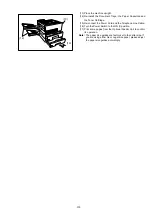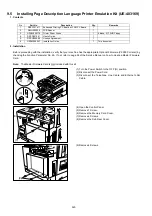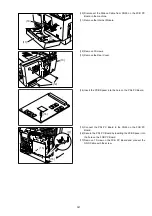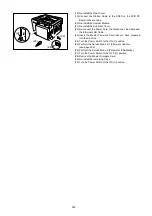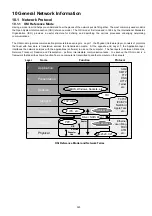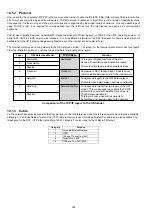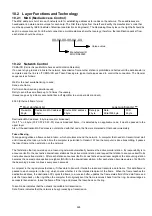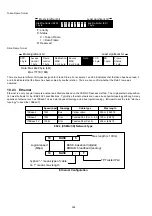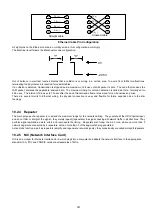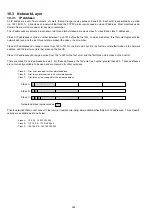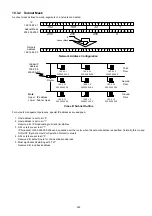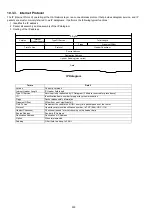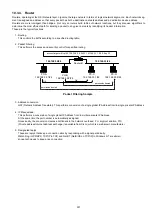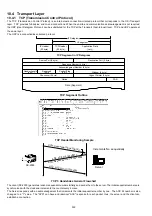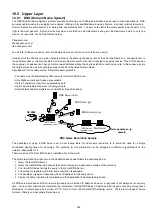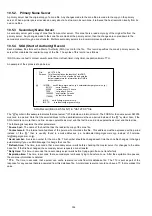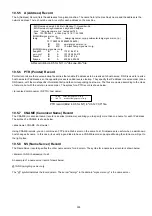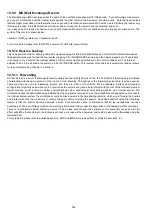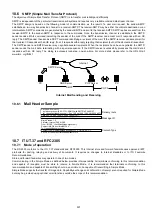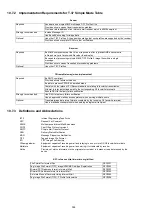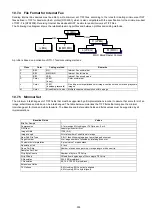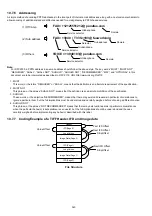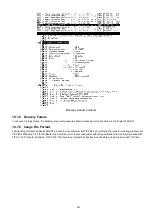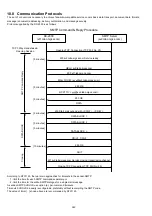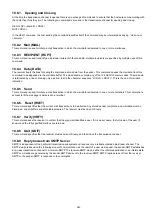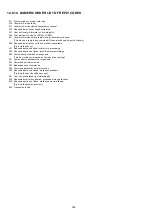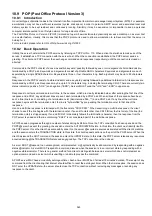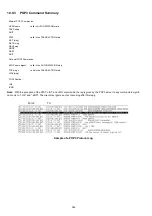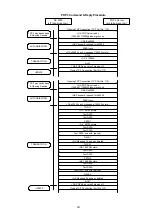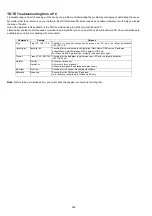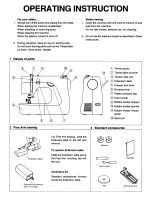
333
10.5 Upper Layer
10.5.1
DNS (Domain Name System)
The DNS (Domain Name System) protocol provides host name and IP address resolution as a service to client applications. DNS
servers enable humans to use logical node names, utilizing a fully qualified domain name structure, to access network resources.
Domain Names are comprised of 2 or more parts, separated by dots. The part on the left is the most specific, and the part on the
right is the most general. A given device may have more than one Domain Name but a given Domain Name points to only one
device. For example, the Domain Names below,
Panasonic.com
Mail.panasonic.com
ifax.panasonic.com
can all refer to the same device, but each domain name can refer to no more than one device.
Usually, all of the devices on a given network will have the same right-hand portion of their Domain Names (i.e. panasonic.com in
the examples above). It is also possible for a Domain Name to exist but not be connected to an actual device. This is often done so
that a group or business can have an Internet email address without having to establish a real Internet site. In these cases, some
real Internet machine must handle the email on behalf of the listed Domain Name.
Specification for this name system follows this basic guideline.
• The name must be separated by dots and must start with ASCII code.
• Only Alpha numeric and hyphen are available.
• Up to 63 characters maximum, separated by dots.
• Up to 255 characters maximum, including all dots.
• Capital letters and small letters are not identical. (Case Sensitive.)
The advantage of using a DNS server over a host lookup table, for host name resolution, is to avoid the need for a single
centralized clearinghouse for all names. The authority for this information can be delegated to different organizations on the
network responsible for it.
There are at least 10 Root DNS servers installed all over the world.
The Name resolution flow is shown in the illustration above and follows the sequence below:
1. Query the local DNS Server.
2. Query the root DNS Server because the domain belongs to a destination outside of the company.
3. Com root DNS Server sends the query to the jp root DNS Server.
4. The procedure repeats until a final name resolution is available.
5. The panafax.co.jp server responds with an IP address for the query name.
6. Finally, the name resolution is completed and the destination IP address is determined.
All DNS servers makes an effort to resolve the query name with an IP address, however, a response is not always sent out every
time. Once a name resolution is completed, the information from the DNS Server IP address table is kept in cache memory at each
DNS server in accordance with a minimum TTL (Time To Live) of SOA (Start Of Authority) record. There are two types of Name
Servers, Primary and Secondary Name Server.
DNS Server (root)
DNS Server
(panasonic.com)
DNS Server (jp)
DNS Server (co.jp)
DNS Server
(panafax.co.jp)
Mail Server
mlsv.panafax.co.jp
domain
1
2
3
4
5
6
7
8
9
10
DX-2000
DNS Name Resolution Sample
Содержание Panafax DX-2000
Страница 2: ......
Страница 27: ...27 9 1 Screw 19 10 Release two Latch Hooks 11 Remove the SNS Assembly 121 9 10 11 ...
Страница 49: ...49 2 15 Screw Identification Template ...
Страница 56: ...56 3 7 2 Printer Circuit 429 650 622 744 607 665 555 506 432 408 405 433 502 610 610 610 621 507 507 639 ...
Страница 57: ...57 3 7 3 Option Cassette Circuit 555 748 728 744 928 953 730 731 731 952 944 930 931 931 ...
Страница 58: ...58 3 7 4 LAN Control Circuit 522 CN50 1102 1104 1101 N C N C RD N C N C RD TD TD ...
Страница 59: ...59 3 7 5 Page Description Language Printer Interface Kit ...
Страница 287: ...314 B Supplies Order No Picture Description DZHT000004 Verification Stamp UG 3313 Toner Cartridge ...

